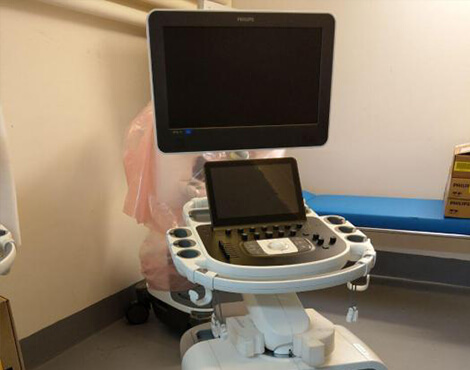Liver Elastography
Various chronic liver diseases such as hepatitis B, C, and fatty liver disease can lead to tissue damage and subsequent scar tissue formation. As the scar tissue accumulates, the liver loses some of its elasticity and becomes stiffer.
Liver elastography involves the use of a surface ultrasound probe that delivers a low-frequency pulse or shear wave to a small volume of liver tissue under the rib cage. The transmission of the ultrasound wave is completely painless.
How Is a Liver Elastography Performed?
Patients are asked to lie flat on an examination table. An ultrasound probe is placed between the ribs on the right side of the lower chest wall. A series of painless pulses are then applied to the liver. The results are recorded on the USG equipment and an overall liver stiffness score is generated. Based on the readings of the procedure, the radiologist predicts the likelihood of advanced fibrosis or cirrhosis.

Patients are asked to wear loose clothing and should not consume any liquids or solids for a minimum of 4 to 6 hours before the test to increase the likelihood of obtaining reliable test results. The scan will take 15 to 20 minutes to complete, but patients should plan on being available for 30 minutes to allow time for preparation.
Why Do I Need a Liver Elastography?
Liver elastography procedures help your doctor determine the severity of hepatic fibrosis in patients with chronic liver disease. Elastography in particular can also help determine if an HCV patient does or does not have advanced fibrosis/cirrhosis, which can assist with treatment decisions regarding the need for oral antiviral therapy, liver cancer surveillance, etc. Some doctors also ask for serial liver elastography measurements once a year to see if the liver disease is improving or worsening over time.
Liver elastography test results are always used in conjunction with other clinical data, laboratory test results, and liver imaging in managing individual patients.
